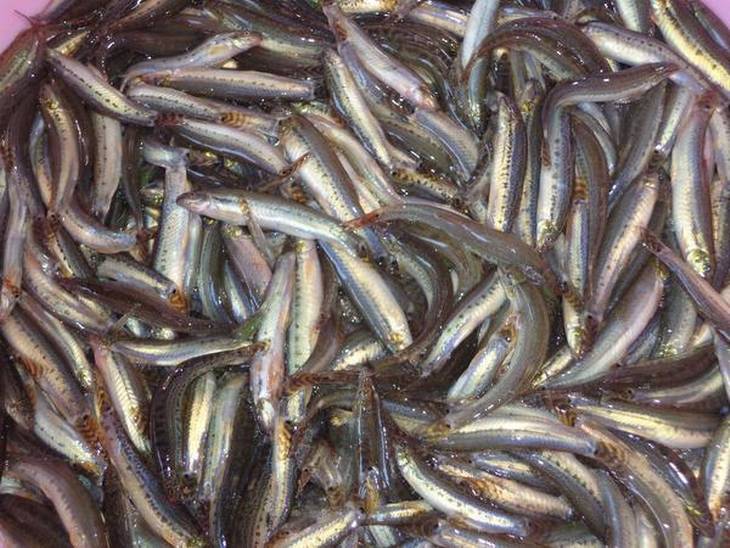A Tamil Nadu favourite, the native fresh-water fish has become rarer to find with the drying of the Vaigai river
At 7 am, inside Madurai’s Nelpettai fish market, 75-year-old K Bose sits on a cemented platform with two big aluminium basins in front of him. As he uncovers them, customers eagerly peek in. Inside the water-filled containers, a school of alive and active Ayirai fish (Lepidocephalichthys thermalis, also called common spiny loach) swim restlessly.
As the old man carefully ploughs a plastic bowl into the vessel, the jiggly squiggly mass of the worm-like fish lash their tiny fins and gambol around, some hopping out onto the floor, twitching for breath before being caught and let back into the water. “The major catch comes in from the Papanasam dam, apart from irrigation tanks in Cauvery Delta region. However, the ayirai from the Vaigai river and the ponds of the Sivanganga and Ramnad districts are considered the tastiest,” says Bose, who brings around 10 to 12 kilos of loaches every day from the town of Tirupuvanam.
“Ever since the Vaigai dried up, there’s been no ayirai fish in our meal,” says M Shenbaga, an expert home-cook. She recalls catching the fish in the Vaigai at Manamadurai in the ’70s, when the river was still flowing.
Ayirai Meen Kozhambu, signature dish of Amma Mess in Madurai. Photo: R. Ashok | Photo Credit: R_ASHOK
“During summers, the water levels in the river would go down and we used to set up a panai pari (a pot made of clay or bamboo that’s tied upstream, so that the loaches that swim against the current are caught in it) and by the evening, we’d take home a potful of ayirai fish.”
The fast dwindling population and the growing demand has made ayirai a pricey delicacy. “There are lots of specialities to this small fish, including the peculiar flavour and taste. Since, they live in the marshy bed of rivers, ponds and lakes, they are rich in mineral and the taste differs according to the soil type. It’s probably the only fresh-water fish that’s sold in padi (a Tamil unit of measurement) and not kilograms. They can live for days in containers if the water is changed daily,” says Bose.
Harvesting ayirai fish | Photo Credit: Special Arrangement
One padi of the fish equals to about 1.25 kilograms and is sold at ₹3,000 at the Nelpettai market. S Sumathi of Amma Mess, buys about three kilos every day. The Amma Mess’ ayirai meen kozhambu is a brand in itself, without which Madurai’s food scene is incomplete.
“Our restaurant is often visited by celebrities, including politicians and film stars, and they never miss the ayirai curry. It’s a favourite of poet Vairamuthu,” beams Sumathi, who learnt the recipe from her mother-in-law. “Since, there’s no business of weeding out bones, it’s easier to eat for kids and old people, and is also a rich source of calcium.” The fish lends its unique muddy flavour to the curry and that gives the kick. With spicy reddish oil films floating on the top, the curry is thick and is typically eaten for lunch, mixed with white rice.
“Ayirai is always bought alive and is a robust fish that doesn’t die so fast. As part of cleaning before cooking, the fish is let to swim in either coconut milk or butter milk. As the fish thrives in the bottom of water bodies, they tend to have mud sediment in their mouth, which is removed when put in milk,” explains Shenbaga.
“Loaches are difficult to culture artificially. So far, there’s been only one instance of success where a fish farmer named Pugazhendi from Vaduvur in Thanjavur district has been able to raise ayirai as an inter-crop in ponds, along with keluthi and catla fish,” says K Karal Marx, Dean, Institute of Post Graduate Studies, Tamil Nadu Fisheries University, Chennai OMR Campus.
“Much needs to be researched on reviving the population of ayirai. Given the various unique features of the fish and their strong cultural connection to the State, we have given a proposal to the government from the Fisheries University to make it the State fish of Tamil Nadu.”








